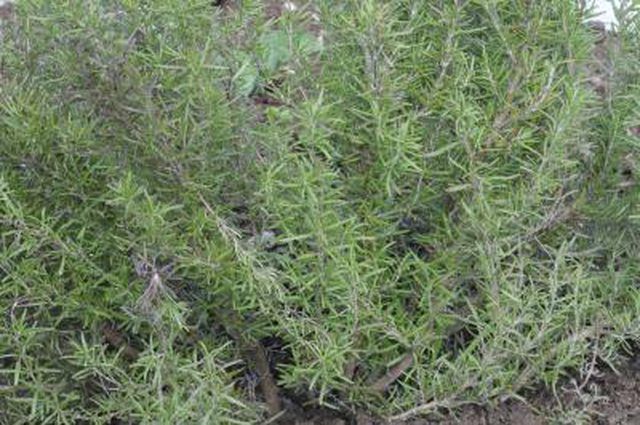Bulbs
Flower Basics
Flower Beds & Specialty Gardens
Flower Garden
Garden Furniture
Garden Gnomes
Garden Seeds
Garden Sheds
Garden Statues
Garden Tools & Supplies
Gardening Basics
Green & Organic
Groundcovers & Vines
Growing Annuals
Growing Basil
Growing Beans
Growing Berries
Growing Blueberries
Growing Cactus
Growing Corn
Growing Cotton
Growing Edibles
Growing Flowers
Growing Garlic
Growing Grapes
Growing Grass
Growing Herbs
Growing Jasmine
Growing Mint
Growing Mushrooms
Orchids
Growing Peanuts
Growing Perennials
Growing Plants
Growing Rosemary
Growing Roses
Growing Strawberries
Growing Sunflowers
Growing Thyme
Growing Tomatoes
Growing Tulips
Growing Vegetables
Herb Basics
Herb Garden
Indoor Growing
Landscaping Basics
Landscaping Patios
Landscaping Plants
Landscaping Shrubs
Landscaping Trees
Landscaping Walks & Pathways
Lawn Basics
Lawn Maintenance
Lawn Mowers
Lawn Ornaments
Lawn Planting
Lawn Tools
Outdoor Growing
Overall Landscape Planning
Pests, Weeds & Problems
Plant Basics
Rock Garden
Rose Garden
Shrubs
Soil
Specialty Gardens
Trees
Vegetable Garden
Yard Maintenance
How Much Cold Can Rosemary Plants Take?
How Much Cold Can Rosemary Plants Take?. Perennial rosemary (*Rosmarinus officinalis* cvs.) has origins in the mild Mediterranean climate, thriving in dry coastal areas. However, some cultivars grow in climates as cold as U.S. Department of Agriculture plant hardiness zone 6a, though growers have to take precautions to protect plants from freezing...

Perennial rosemary (Rosmarinus officinalis cvs.) has origins in the mild Mediterranean climate, thriving in dry coastal areas. However, some cultivars grow in climates as cold as U.S. Department of Agriculture plant hardiness zone 6a, though growers have to take precautions to protect plants from freezing winter weather.
Sun, Soil and Planting Location
Most rosemary cultivars grow best in USDA zones 8 through 10. Those growing in USDA zones 6 or 7 are considered cold hardy.
Plant rosemary in a spot that’s in full sun throughout the year. Choose a location that protects it from winter winds. Cold, dry winds are especially hard on rosemary. It grows in a wide range of soils, but they must be well drained. It prefers sandy or rocky soils.
Most Cold-Hardy Cultivars
Arp (Rosemarinus officinalis ‘Arp’): Named for Arp, Texas, where it was discovered, this cultivar grows up to 3 feet or taller in USDA zones 6a through 9b. It has typical gray-green color with aromatic leaves.
Madeline Hill (Rosmarinus officinalis 'Madeline Hill'): This cultivar has intensely aromatic silver, blue-gray, needle-like leaves and grows up to 3 feet tall and 3 feet wide in USDA zones 6a through 9b. A bushy rosemary, it yields dainty, light blue flowers in winter and spring.
Ken Taylor (Rosemarinus officinalis ‘Ken Taylor’): A ground cover that grows 12 to 24 inches high but spreads 5 to 6 feet across, this cultivar has dark green foliage that trails up to 2 feet. It grows in USDA zones 6a through 11, yielding bright lavender-blue flowers in winter and spring.
Majorca Pink (Rosemarinus officinalis ‘Majorca Pink’): Useful for growing as a hedge, this cultivar grows 2 to 4 feet high and 18 inches high, yielding lavender-pink flowers in winter and early spring in USDA zones 6a through 10b.
Cold-Hardy Cooking Cultivars
Three cold-hardy cultivars have leaves that are highly prized for cooking.
Tuscan Blue (Rosmarinus officinalis ‘Tuscan Blue’): The standard cooking cultivar, this rosemary has large, aromatic, deep green leaves and grows from 3 to 6 feet tall in USDA zones 7a through 10b.
Blue Spires (Rosmarinus officinalis ‘Blue Spires’): Also sporting aromatic, dark green leaves, this cultivar grows 3 to 4 feet high in USDA zones 7a to 11.
Spice Island (Rosmarinus officinalis ‘Spice Island’): Growing 3 to 6 feet high with aromatic leaves, this cultivar can be grown as a hedge or shrub in USDA zones 7a through 10b.
Preparing for Winter Cold
USDA zones only give you the average winter low temperatures. Although you may live within the recommended zones, freezing weather is never good for rosemary, and you should act early to take steps to protect your plant.
Don’t apply heavy mulch before cold winter strikes in autumn because the mulch will keep the soil warmer, reducing the plant’s ability to adjust to severe cold when it hits.
To avoid spurring growth that will still be immature when autumn frost hits, don’t fertilize rosemary after July.
Avoid pruning rosemary after August. That too will stimulate immature growth that will be at risk when autumn frost strikes.
Keep the soil of rosemary moist but not soggy in late summer and early autumn. A lack of water stresses plants, weakening their ability to withstand winter cold.
Acting When Freezing Weather Hits
If you live in an area with winter freezes, don't assume that your rosemary will survive without help. Take steps to protect it.
After the first hard freeze, apply a 3- to 6-inch-deep layer of chopped leaves, pine needles, straw or other organic material. The mulch will help protect the roots and help the plant endure freezing and thawing soil. Remove most of this mulch in the spring as the rosemary begins growing again.
Alternatively, prune rosemary plants to within 2 inches of the ground after the first hard frost. Cover the stub with soil and top the soil with 4 to 5 inches of mulch.
Another way to protect the plant is to circle it with a wire cage that is at least 6 inches from the sides of the plant and load the cage with mulch.
Even if the ground freezes, rosemary plants can lose water from their leaves on bright, sunny days. If the weather forecaster predicts a severe freeze, water your plant.